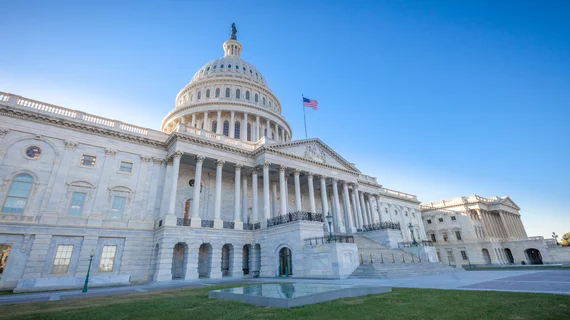ACR asks Congress to protect radiology practices from double-whammy of COVID-19, costly policy change
Radiologists and other physician specialties are getting hit hard by the pandemic, as employees stay home, and patients put off elective imaging. Now, industry groups are concerned about a potential double-whammy, with one policy change that experts estimate could cost imaging physicians billions in the coming years.
The American College of Radiology and 29 other healthcare trade groups on Friday implored Congress to stop any further financial harm by waiving budget neutrality requirements for at least five years. They’re concerned about the feds’ plan to boost reimbursement for care-related Evaluation and Management (E/M) by about $5 billion.
An analysis commissioned by the college last year found that increasing the valuation for E/M services in a budget-neutral world would mean pay cuts for radiologists and other providers who do not use such codes. ACR estimated this would amount to $450 million in rad pay reductions for 2020 and $5.6 billion over the next decade.
“We are deeply concerned about the sizable cuts this update will impose as a result of the current requirement for budget neutrality upon various sections of the provider community who do not frequently, if ever, bill E/M codes,” ACR and others wrote in the March 20 letter to leaders of the House and Senate. “Notwithstanding the current COVID-19 crisis, many healthcare providers were already concerned about the impact of these policy changes on their patients and their practices.”
Provider groups noted that the pandemic’s impact on physician practices has been “swift” and felt across every specialty. This includes imaging centers operating at less than half their normal volume, canceled elective surgeries, and other providers struggling to make payroll or write rent checks. While “undoubtedly necessary,” if such practice interruptions continue, it could result in staff furloughs and other drastic measures.
“It has become clear that now is not the time to implement any payment policy changes that will exacerbate the financial instability of healthcare providers’ practices,” wrote the ACR, alongside the Radiology Business Management Association, Association for Quality Imaging, and groups representing everyone from ophthalmologists to plastic surgeons. “These cataclysmic economic impacts are beyond anyone’s ability to predict and will have repercussions for years to come.”
Just as Congress is providing relief to consumers and other constituents, physician groups want provisions to “fortify the long-term financial stability” of their profession. They’re asking Congress to waive budget neutrality requirements tied to the E/M proposal for at least five years
“This much-needed action by Congress will provide a critical reprieve for a broad scope of healthcare providers facing substantial payment reductions in the coming months,” they concluded.

